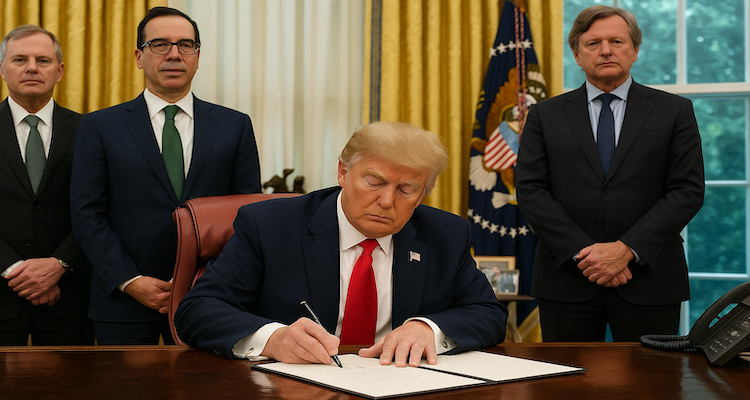China Eyes Yuan-Backed Stablecoins in Global Currency Push
China is weighing approval of yuan-backed stablecoins, signaling a major policy shift to accelerate the currency’s global role amid U.S. dominance in digital assets.
Introduction: A Historic Policy Shift on the Horizon
China is preparing to break from its long-standing resistance to digital assets by considering the launch of yuan-backed stablecoins. If approved, this would mark Beijing’s first step into the world of blockchain-based currencies and represent a significant pivot in its global financial strategy.
According to people familiar with the matter, the State Council, China’s top governing body is set to review a comprehensive plan later this month that could open the door for yuan-pegged stablecoins. The move reflects Beijing’s ambition to counter the U.S. lead in digital currencies and strengthen the yuan’s role in global markets.
Context: From Crypto Ban to Currency Innovation
Just a few years ago, China outlawed cryptocurrency trading and mining, citing risks to financial stability. That 2021 ban was seen as a definitive rejection of digital assets. Yet the global rise of stablecoins digital tokens pegged to traditional currencies like the U.S. dollar has forced Beijing to reconsider.
Stablecoins have become an essential tool for cross-border transfers, offering speed, low costs, and accessibility beyond traditional banking. Today, more than 99% of all stablecoins are tied to the dollar, underscoring the U.S. dominance that China has long sought to balance.
For Beijing, embracing yuan-backed stablecoins could help the currency gain international traction, aligning with its long-term goal of elevating the yuan to a status comparable to the dollar and euro.
Main Developments: China’s Stablecoin Roadmap
The upcoming State Council review will cover several critical points:
-
Global Currency Targets: Clear benchmarks for expanding yuan usage in international payments and trade.
-
Regulatory Oversight: Assignment of responsibilities to key domestic regulators, including the People’s Bank of China (PBOC).
-
Risk Management: Guidelines to safeguard financial stability as digital yuan assets enter circulation.
-
Leadership Direction: A high-level study session, expected later this month, will see senior officials deliver policy guidance and define the boundaries of stablecoin adoption.
Sources indicate that Hong Kong and Shanghai are expected to serve as pilot hubs for yuan-backed stablecoin initiatives. Hong Kong, in particular, has already taken steps with its new stablecoin ordinance, which came into effect on August 1, positioning the city as a global leader in regulating fiat-backed digital currencies.
Expert Insight: Balancing Innovation and Control
Economists and advisors close to the PBOC say Beijing views stablecoins as a double-edged sword. On one hand, they present a promising tool for yuan internationalization. On the other, China’s strict capital controls could slow widespread adoption.
Huang Yiping, a former PBOC advisor, recently noted that an offshore yuan stablecoin in Hong Kong is “a possibility,” suggesting regulators may first test the concept outside mainland China before broader rollout.
Meanwhile, Chinese exporters are increasingly using dollar-pegged stablecoins in global trade, raising pressure on Beijing to respond. South Korea and Japan are also developing their own national stablecoins, highlighting regional momentum in Asia toward regulated digital currencies.
Impact: Currency Wars in the Digital Era
The implications of China’s move are far-reaching.
-
Challenge to Dollar Dominance: With nearly half of global payments still conducted in U.S. dollars, a yuan stablecoin could offer an alternative for countries seeking to diversify away from the greenback.
-
Geopolitical Undercurrents: The initiative comes as tensions between Washington and Beijing intensify, particularly around financial technology and trade.
-
Cross-Border Trade Boost: If adopted, yuan stablecoins could streamline payments within China-led trade blocs, including discussions planned at the Shanghai Cooperation Organisation (SCO) summit in Tianjin later this month.
-
Market Growth Potential: Though still small at about $247 billion, the global stablecoin market could surge to $2 trillion by 2028, according to Standard Chartered Bank. China wants a slice of that growth.
Conclusion: Beijing’s Calculated Gamble
China’s consideration of yuan-backed stablecoins signals a major recalibration of its digital finance strategy. By moving cautiously yet decisively, Beijing is trying to strike a balance: harnessing the efficiency of blockchain-based payments while maintaining control over capital flows.
If the plan is approved, it could accelerate the yuan’s presence in global markets, offering an alternative to dollar-based stablecoins and reshaping the digital currency landscape. The coming weeks and the decisions of China’s top leadership may well define the next chapter of the currency wars in the digital era.
Source: (Reuters)
(Disclaimer: This article is based on information from sources familiar with the matter. Neither the State Council of China nor the People’s Bank of China has issued an official statement at the time of publication.)
Also Read: Intel Secures $2B From SoftBank in Crucial Bid to Revive Chip Dominance











